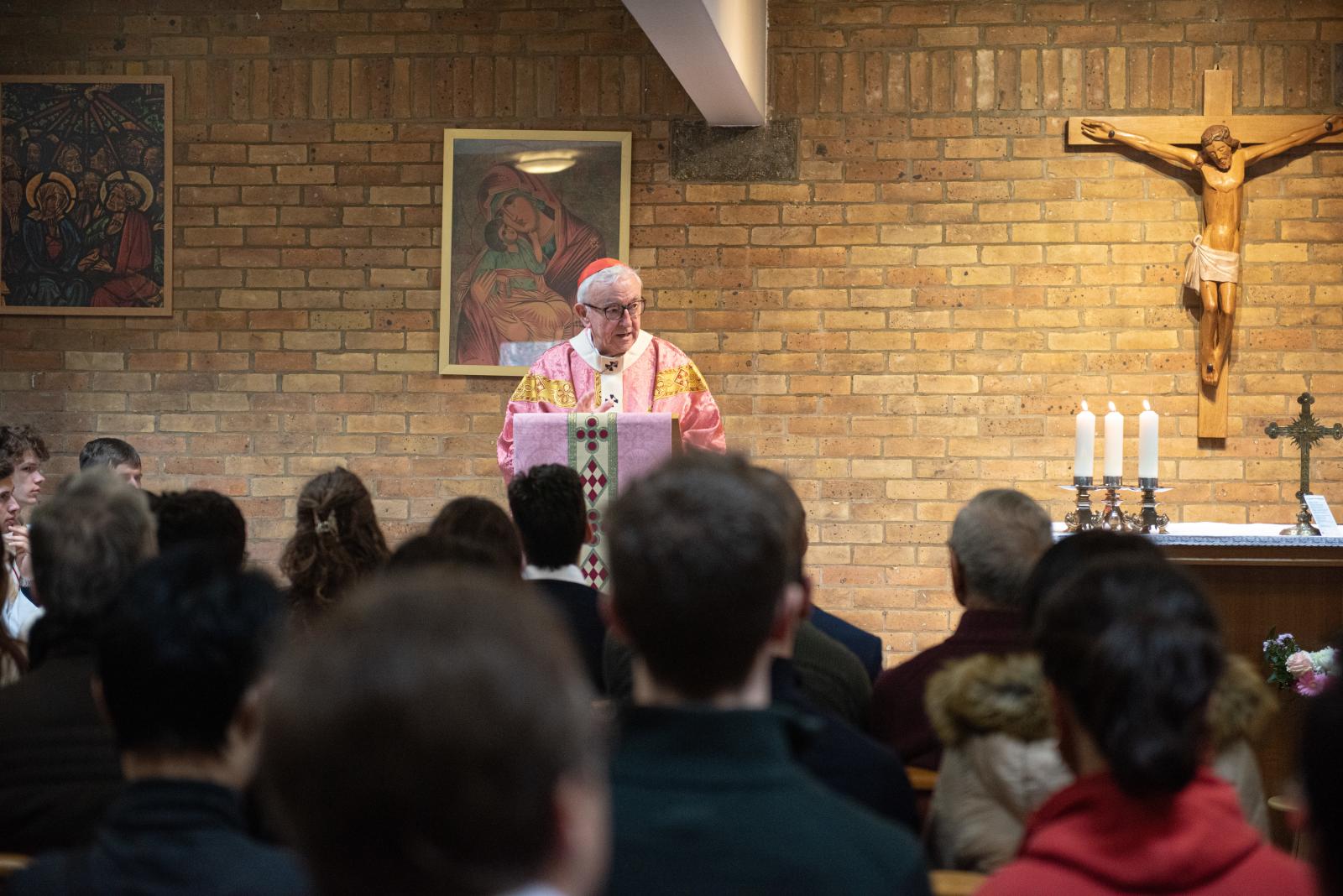Given on the Fourth Sunday of Lent, 10th March 2024, at Newman House
I would like to take you to Oxford Street, not as it is today, but in the year 1581. It was, I think, the route along which those being dragged on hurdles to their deaths at Tyburn would have travelled. The day is 1st December and the two Catholic priests being taken to the place of execution are Edmund Campion and Ralph Sherwin. It is recorded that as they waited, Fr Sherwin, looking at the autumn sun, said to Fr Campion, ‘Tonight we shall be above yonder fellow’. And so they went to their cruel deaths.
The prayer we have offered this morning asks that we may be reborn, through baptism, as citizens of heaven.
Those two martyrs lived that truth: citizens of heaven, yet still on earth. Their eyes could see beyond the limitations of this earthly life. They had eyes for heaven and so could live and hope accordingly.
They had eyes that could see.
And so to the Gospel where we have just heard of the cure of the man born blind, so that he could truly see.
The purpose of this narrative and event is clearly stated: ‘so that the works of God might be displayed’. In this account we are being led to see and understand the truth, a truth that reveals heaven, that gives us the light beyond the sun by which we are to live.
Or more precisely, the gift, the sight we are being given is that of seeing Jesus for who he really is.
The Pharisees are an intrinsic part of the drama, as they always are in the Gospel of John. We must be able to see ourselves in them. Their probing, their questioning, is that of us all, the cynical culture of our age (and every age, I think).
Who has done the unusual thing? How are we to rate him? Is he a hoax, a fraud? How can we deflate him and his message?
Well, here are some of their questions. Does he keep the law, does he conform? No, he doesn’t. Who testifies on his behalf? Only his poor uneducated parents. Does he pass the ‘sinner test’? Is he above our level of condemnation or are there not signs in his life, as in lives of the witnesses, that he is a fraud, a sinner? He does not. And Jesus fails these tests too.
But the man himself can see. He knows. And he worships Jesus.
The pathway to this faith is not easy. It is against the flow, the tide of much opinion and ways of thinking about life, about the people, about sin and condemnation. But it is the pathway of life, the light of heaven. In this we rejoice, especially today. And we thank all who have opened for us this pathway of faith, especially our mothers.
We are preparing for Holy Week. On Good Friday the crucifix will be held before us, the figure of Christ, forsaken and dead.
What will we see?
A man condemned and mocked, by all except a very few? Yes.
A figure of desolation and one for whom we feel immense pity and grief? Yes.
A figure of a supreme self-sacrifice, someone giving himself willingly to this death for the sake of others? Yes, as our eyes are opened.
Then we see an act of perfect love in which the condemnations and hatreds of the world are resolved, absorbed, embraced. Then we see a figure of perfect beauty, true beauty which brings together the shattered fragments of life and discloses their inner resolution and wholeness, their coherence. A beauty which discloses the mystery of God.
This is the light. This is the light by which we live, seen with the eyes of faith, disclosing heaven.
And like the man of the Gospel, we too worship him.
But I have a last thought. How do we come to receive this gift of faith, these eyes that truly see? What is the best place to be in order to be so chosen. Look back briefly at the first reading. The place to be, in order to be chosen of the Lord, is ‘out looking after the sheep’. That is worth pondering.
Amen.
